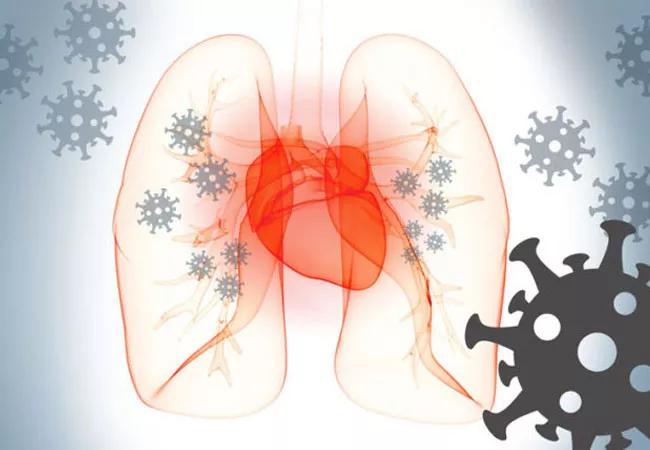The who, what, when and why of our new Post-COVID Cardiovascular Recovery Center

As the U.S. enters the second year of COVID-19 prevalence, one of the most significant developments for outpatient care is the proliferation of patients who continue to have symptoms of COVID-19 more than a month after their initial illness.
Advertisement
Cleveland Clinic is a non-profit academic medical center. Advertising on our site helps support our mission. We do not endorse non-Cleveland Clinic products or services. Policy
“Patients with ongoing symptoms after recovery from COVID-19 are increasingly recognized as a growing population in need of attention,” says cardiologist Jerry Estep, MD, Medical Director of Cleveland Clinic’s Kaufman Center for Heart Failure and Recovery and Section Head of Heart Failure and Transplantation.
In response, Cleveland Clinic has launched the Post-COVID Cardiovascular Recovery Center within its Miller Family Heart, Vascular & Thoracic Institute. The center works in collaboration with Cleveland Clinic’s multidisciplinary reCOVer Clinic, which provides evaluation and treatment from a variety of specialists for persistent complications following COVID-19.
“The Post-COVID Cardiovascular Recovery Center and reCOVer Clinic provide the opportunity to better understand the long-term sequelae of COVID-19 and establish best management practices,” says Dr. Estep, who is co-director of the Post-COVID Cardiovascular Recovery Center and one of the cardiology team members of the multidisciplinary effort.
He gave an overview of these new offerings at a recent Tall Rounds online CME activity from Cleveland Clinic covering the current state of COVID-19 and vaccination.
Dr. Estep notes that many of the lingering signs and symptoms doctors have been seeing in patients after apparent recovery from COVID-19 — especially fatigue, dyspnea and chest pain — appear to have an underlying cardiovascular component. He cites potential cardiovascular involvement on multiple fronts, including:
Advertisement
Published data indicate that as many as 60% of patients have evidence of active cardiac inflammation months after the original COVID-19 infection, and cardiac biomarkers, such as a detectable troponin level, have been seen in up to 71% of patients in the convalescent phase, regardless of severity and course of the acute illness (JAMA Cardiol. 2020;5:1265-1273).
“We have much to learn about the implications of such findings,” Dr. Estep observes. “Following these patients will give us the experience and data we need to prospectively define outcomes.”
At the new Post-COVID Cardiovascular Recovery Center, patients with persistent symptoms following COVID-19 that may have an underlying cardiovascular etiology — such as chest pain, dyspnea, fatigue, heart palpitations or exertion intolerance more than four weeks after initial infection — undergo a focused evaluation to screen for cardiovascular complications. Patients who had COVID-19 can use the center whether or not they required hospitalization for their initial illness.
In addition, the center evaluates patients with preexisting cardiovascular disease (e.g., hypertension, heart failure, atrial fibrillation) who had COVID-19 of any severity in order to assess for possible changes in cardiovascular status.
Patients are evaluated by a general cardiologist or a cardiology subspecialist and undergo ECG, echocardiography and laboratory tests, including cardiac biomarkers to assess cardiac function. Additional diagnostic tests — such as cardiac MRI, cardiac pulmonary exercise testing, Zio® patch rhythm monitoring, chest CT and lower extremity duplex testing — are offered according to individual symptoms and examination or test findings, in keeping with clinical standards. Patients have access to subspecialists and resources from electrophysiology, sports cardiology, heart failure, cardiovascular imaging and vascular medicine, as indicated.
Advertisement
After evaluation, patients are offered a personalized care plan, and cardiovascular treatments are started if appropriate. Patients will be followed until cardiovascular symptoms resolve.
“We are concerned that patients recovering from COVID-19 may develop subclinical or even overt cardiovascular abnormalities related to cardiomyopathy, cardiac arrhythmias and vascular changes,” Dr. Estep explains. “Screening will allow us to get a better handle on this disease and start to develop best practices for management.”
In addition to a cardiovascular evaluation, patients are checked and screened for other symptoms and signs related to COVID-19 recovery for appropriate referral. Besides cardiology, principal members of the reCOVer Clinic team include clinicians from infectious disease, family medicine, pulmonary medicine, neurology, geriatrics, rheumatology, nephrology, psychiatry/neuropsychiatry, functional medicine, integrative medicine, otolaryngology, sleep medicine, and physical, occupational and speech therapy.
“The efforts and goals among colleagues from Cleveland Clinic’s various institutes are in complete alignment,” Dr. Estep emphasizes. “We are committed to triaging patients who have disease outside the realm of each specialty.”
The Post-COVID Cardiovascular Recovery Center provides an important opportunity for investigation, Dr. Estep notes. Patient encounters are tracked, and patient-reported outcome measures are captured using instruments such as the Patient Health Questionnaire-9, General Anxiety Disorder-7, PROMIS Global Health, Kansas City Cardiomyopathy Questionnaire-12 and others. Specialty care pathways and smart forms within the electronic health record are used to record disease burden and clinical outcomes in an accessible format for future research.
Advertisement
“Cleveland Clinic has a long history of routinely collecting a wealth of relevant clinical data,” Dr. Estep observes. “Gathering this information will position us down the road to better understand the long-term burden of COVID-19.”
Advertisement
Advertisement

Patients report improved sense of smell and taste

Clinicians who are accustomed to uncertainty can do well by patients

Unique skin changes can occur after infection or vaccine

Cleveland Clinic analysis suggests that obtaining care for the virus might reveal a previously undiagnosed condition

As the pandemic evolves, rheumatologists must continue to be mindful of most vulnerable patients

Early results suggest positive outcomes from COVID-19 PrEP treatment

Could the virus have caused the condition or triggered previously undiagnosed disease?

Five categories of cutaneous abnormalities are associated with COVID-19